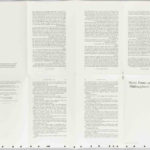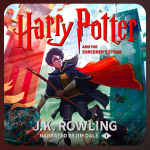Christmas in ‘Chamber of Secrets’: or, why is the crowing of the rooster fatal to the Basilisk? PART 1
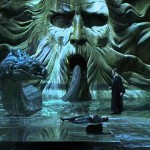
Dec 23, 2019
Books, Exclusives, Fandom, Fans, Fun, Holidays, J.K. Rowling, News
How are you faring this holiday season, Potterheads? If you’re in need of some Harry Potter analysis to distract you from stress and holiday shopping traffic, we’ve got just the piece for you!
Last year, Dr Beatrice Groves (author of Literary Allusion in Harry Potter) helped us explore festive themes in the Harry Potter series, and this year we’re lucky enough to have her back to explain the connections between the roosters and Basilisk, and connections to Christmas in Harry Potter and the Chamber of Secrets! Settle in, and read Part 2 here.
In Chamber of Secrets Hermione commits an action never commented on by the other characters, but far more out of character than punching Malfoy or walking out on Professor Trelawney. She tears a page out of a library book. The page she has torn out explains that the creature stalking Muggleborns at Hogwarts is a Basilisk:
“Of the many fearsome beasts and monsters that roam our land, there is none more curious or more deadly than the Basilisk, known also as the King of Serpents. This snake, which may reach gigantic size and live many hundreds of years, is born from a chicken’s egg, hatched beneath a toad. Its methods of killing are most wondrous, for aside from its deadly and venomous fangs, the Basilisk has a murderous stare, and all who are fixed with the beam of its eye shall suffer instant death. Spiders flee before the Basilisk, for it is their mortal enemy, and the Basilisk flees only from the crowing of the rooster, which is fatal to it.” (Chamber, Chap 16, p.215)
In Muggle terms, because this is a natural history book that informs the reader about fabulous beasts, this book is a bestiary. Bestiaries are medieval animal books (and Rowling notes that this is a ‘very old library book’) which describe mythical beasts such as unicorns, phoenixes and Basilisks alongside real animals. Bestiaries are an important source for J.K. Rowling’s animal lore and, indeed, in May 2018 she placed a page from the early thirteenth-century Aberdeen Bestiary as her Twitter header:

Long before Rowling wrote her contemporary bestiary Fantastic Beasts and Where to Find Them (2001) – or the more recent film versions – she had been influenced by bestiaries. And she nods towards this in Newt Scamander’s introduction in which he notes that some magical beasts turn up in ‘Muggle bestiaries:’ ‘a glance through Muggle art and literature of the Middle Ages reveals that many of the creatures they now believe to be imaginary were then known to be real. The dragon, the griffin, the unicorn, the phoenix, the centaur—these and more are represented in Muggle works of that period, though usually with almost comical inexactitude’ (xxiv). The latter claim is not only Rowling’s tongue-in-cheek response to those who might claim that she hasn’t done enough research about Hippogriffs; it is also a witty assertion of primacy. It is not that she borrows from bestiaries, but that their authors have caught glimpses of her world.
Hermione has torn a page from a bestiary – or ‘book of beasts’ – and it is the animal lore in the description which enables the trio to identify the Basilisk. It is the information that the Basilisk terrifies spiders, and that it is in its own turn destroyed by the crowing of the rooster, which identifies it (and it is noticeable that is Hagrid – the person who cares most about animals in Hogwarts – who has provided both pieces of information). One of these crucial clues (the one about the roosters) has been emphatically linked by Rowling with Christmas.
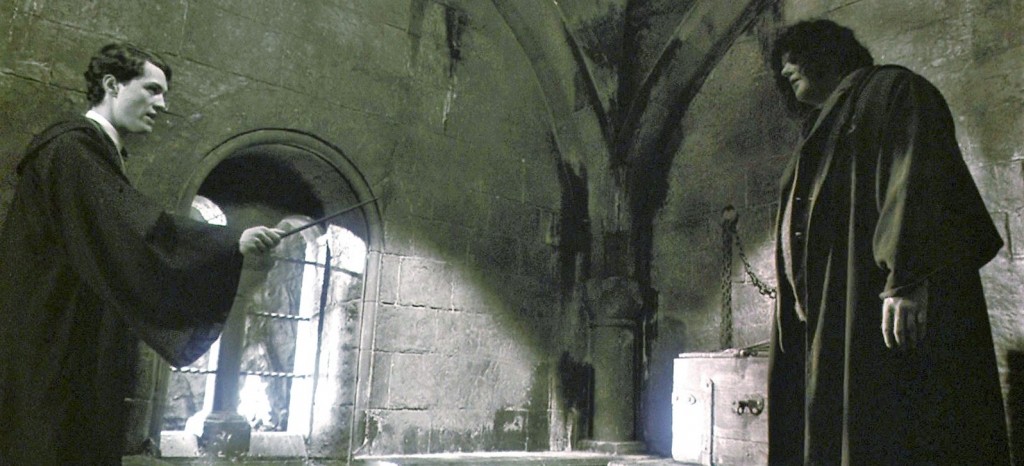
The reader’s first encounter with the fact that someone has been silencing the roosters, happens on a snowy December day, just before the school breaks up for the Christmas holidays. Rowling builds a verbal snowscape round the disclosure of this vital piece of information – for it is part of the magical nature of Hogwarts that it will always have a white Christmas: ‘a silence deep as the snow on the grounds descended on the castle… Christmas morning dawned, cold and white’ (Chamber, Chap 12, p.158). Just beforehand, through a gap in the curtains around his four-poster, Harry watches ‘the snow starting to drift past the tower window;’ the morning after ‘the snow that had begun in the night had turned into a blizzard so thick that the last Herbology lesson of the term was cancelled… The castle was darker than it usually was in daytime, because of the thick, swirling grey snow at every window’ (Chamber, Chap 11, pp.147, 148). Harry decides to spend unexpected free time on a suitably Christmassy mission of peace-making, but setting off to find Justin Finch-Fletchley he bumps into Hagrid swathed in snow: ‘Hagrid’s face was entirely hidden by a woolly, snow-covered balaclava… A dead rooster was hanging from one of his massive, gloved hands’ (p.150).
Hagrid explains, in a seemingly irrelevant disclosure, that something (someone) has been killing the roosters; and then this dead rooster returns, slightly comically, as Hagrid rushes in (to exonerate Harry from the double Basilisk-attack on Justin Finch-Fletchley and Nearly Headless Nick) with ‘the dead rooster still swinging from his hand’ (Chap 12, p.156). The apparently unrelated comic touch of the rooster is then repeated three times, as its body acts as an objective correlative for Hagrid’s emotions. Hagrid’s excitable rant about Harry’s innocence is accompanied by ‘waving the rooster around in his agitation, sending feathers everywhere;’ and then, when Dumbledore takes the wind out of Hagrid’s sails by saying that he too believes Harry to be innocent, the rooster likewise droops:
‘Oh,’ said Hagrid, the rooster falling limply at his side. ‘Right. I’ll wait outside then, Headmaster.’
And he stomped out looking embarrassed.
‘You don’t think it was me, Professor?’ Harry repeated hopefully as Dumbledore brushed rooster feathers off his desk. (p.156)
The reader is likely to have dismissed the rooster from their mind as its feathers are brushed from the desk. But in doing so they have fallen for Rowling’s trademarked comic misdirection, as she shrouds the importance of this rooster’s death under a piece of comic business.
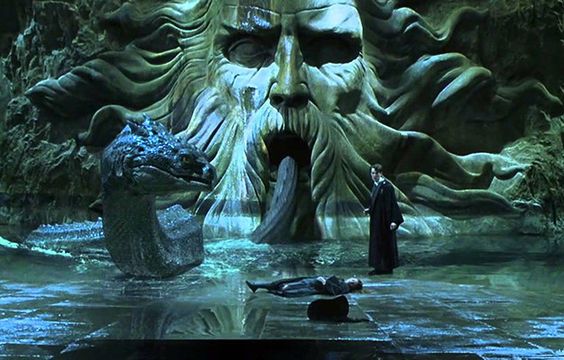
But while most readers will realise on re-reading that this rooster was important, few have noticed the way in which Rowling has symbolically placed this revelation of the rooster’s fatal relation to the Basilisk at Christmas. It is link which ties into the moral reading of animals found in medieval bestiaries. It also has a specific link with a Christmas myth about the crow of the cockerel.
The beautiful Oxford Bestiary – MS Bodley 764 – seems one likely source for Rowling’s bestiary lore: a lavishly illustrated translation was published in 1992. Richard Barber’s introduction notes that some of the animals within it are ‘wholly fantastic’[1] – a word that Rowling will, of course, punningly make the title of her in Fantastic Beasts and Where to Find Them.
The point of the bestiaries is to explain natural phenomena in moral terms. Not to understand animals, but through them to understand the mind of their creator. All the animals in a bestiary are, basically, divided into animals that were held to symbolise the devil, or animals that were held to symbolise the divine. Barber’s introduction explains that bestiaries intended for their readers to ‘learn the way to redemption by the examples of different creatures. Each creature is therefore a kind of moral entity, bearing a message for the human reader’ (7). The message of the Basilisk is unequivocally satanic:
“the basilisk signifies the devil, who openly kills the heedless sinner with his venom; he himself is conquered, like all other harmful creatures, by the solider of Christ who puts all his hope in the Lord, whose power overcomes and tramples underfoot all hostile forces. Of this too the prophet says in the Psalms: ‘Thou shalt tread upon the asp and basilisk; the young lion and the dragon shalt thou trample underfoot’ [91:13]. This represents divine power, which holds sway over so many savage creatures. All these names are aptly bestowed on the devil. He is an asp when he strikes secretly; a basilisk when he spreads his poison abroad; a lion when he pursues the innocent; a dragon when in his evil greed he swallows the heedless. But, truly, at the glorious coming of our Lord, all creatures will lie subject at His feet.”[2]
One piece of evidence that Rowling may have consulted this bestiary lies in its opening description of the Basilisk: ‘the basilisk’s name in Greek (regulus) means little king, because he is the king of creeping things.’ In Fantastic Beasts (2001) Rowling writes that the Basilisk – ‘also known as the King of Serpents’ – was first recorded as being bred by ‘Herpo the Foul, a Greek Dark wizard’ (7). Herpo’s name is derived from the Greek herpein (‘to creep’) – just as the bestiary notes that the Basilisk is the ‘king of creeping things.’ Rowling’s reference to Greek, to the Basilisk as a king and the pun on ‘creep’ all sound like they could have been inspired by the beginning of the ‘Basilisk’ entry in MS Bodley 764: ‘The basilisk’s name in Greek (regulus) means little king, because he is the king of creeping things.
Rowling’s own contemporary bestiary – her original Fantastic Beasts (2001) – is not, of course, like its medieval forebears, explicitly Christian. As a number of critics have noted, however, while her ‘appropriation of the medieval bestiary does not overtly moralize or allegorize, and yet still imbues the text with theological richness.’[3] It echoes ‘the symbolic potential of the bestiaries to serve as an index for the many animals that either chart Harry’s human potential to combat evil, or foreshadow the Christ-like sacrifice that enables him to conquer evil by the end of the series, or both.’[4]
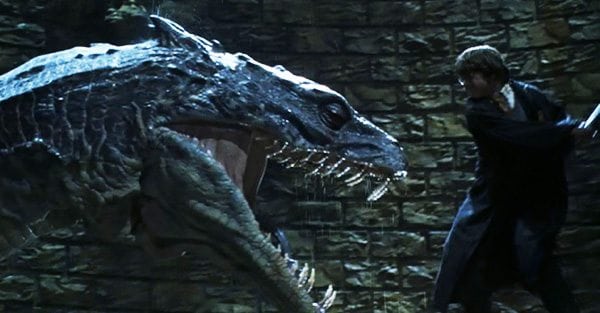
It is noticeable, too that the Scriptural references to Basilisks or Cockatrices (another name for this beast), likewise connect it with dark forces, but also turn up prior to Christmas. One of the readings of Isaiah, read in the Anglican Church during Advent, prophesies that ‘the sucking child shall play on the hole of the asp, and the weaned child shall put his hand on the cockatrice’ den’ (Isaiah 11:8, King James Version). A nineteenth century version of Wikipedia – Charles Knight, The English Cyclopaedia (1854) – notes that as the Basilisk typified ‘the principle of evil, or Anti-Christ’ so it makes symbolic sense that it should be countered by the rooster, the herald of the light: ‘as soon as he heard the cock crow, he expired. This we learn from Aelian; and African travellers, consequently, carried with them the ‘bird of the dawning’ as a specific against Cockatrices [Basilisks].’[5]
Rowling’s choice to use the rooster as the animal who is fatal to the Basilisk (other animals are mentioned by bestiaries) and to reveal that someone has been silencing the roosters at Christmas, connects with a specific Christian myth about cockerels and Christmas which I’ll discuss tomorrow.
REFERENCES:
[1] Richard W. Barber, trans., Bestiary: Being an English Version of the Bodleian Library, Oxford M. S. Bodley 764 with All the Original Miniatures Reproduced in Facsimile (London: Folio Society, 1992), p.7.
[2] Richard W. Barber, trans., Bestiary: Being an English Version of the Bodleian Library, Oxford M. S. Bodley 764 with All the Original Miniatures Reproduced in Facsimile (London: Folio Society, 1992), p.185.
[3] Alison Gulley, ‘“We Wol Sleen this False Traytor Deeth” The Search for Immortality in Chaucer’s Pardoner’s Tale and J.K. Rowling’s The Deathly Hallows’ Studies in Medievalism XXIII (2014): 189-204 (191).
[4] Gail Orgelfinger, ‘J.K. Rowling’s Medieval Bestiary’ Studies in Medievalism XVII: Defining Medievalism(s), ed. Karl Fugelso (Cambridge: D.S. Brewer, 2009), 141-60 (141).
[5] Charles Knight, The English Cyclopaedia: A New Dictionary of Universal Knowledge, Volume 2: Natural History (London: Bradbury and Evans, 1854), pp.50, 52
We’d like to thank Beatrice for her thorough analysis of Christmas in Harry Potter, and for helping us get in the festive spirit! Read her analysis of carols in Harry Potter here, her analysis of the History of Magic exhibition here, her in-depth look at plant lore in Harry Potter, and be sure to check out Dr Groves’ book, Literary Allusion In Harry Potter, and follow her on Twitter!
